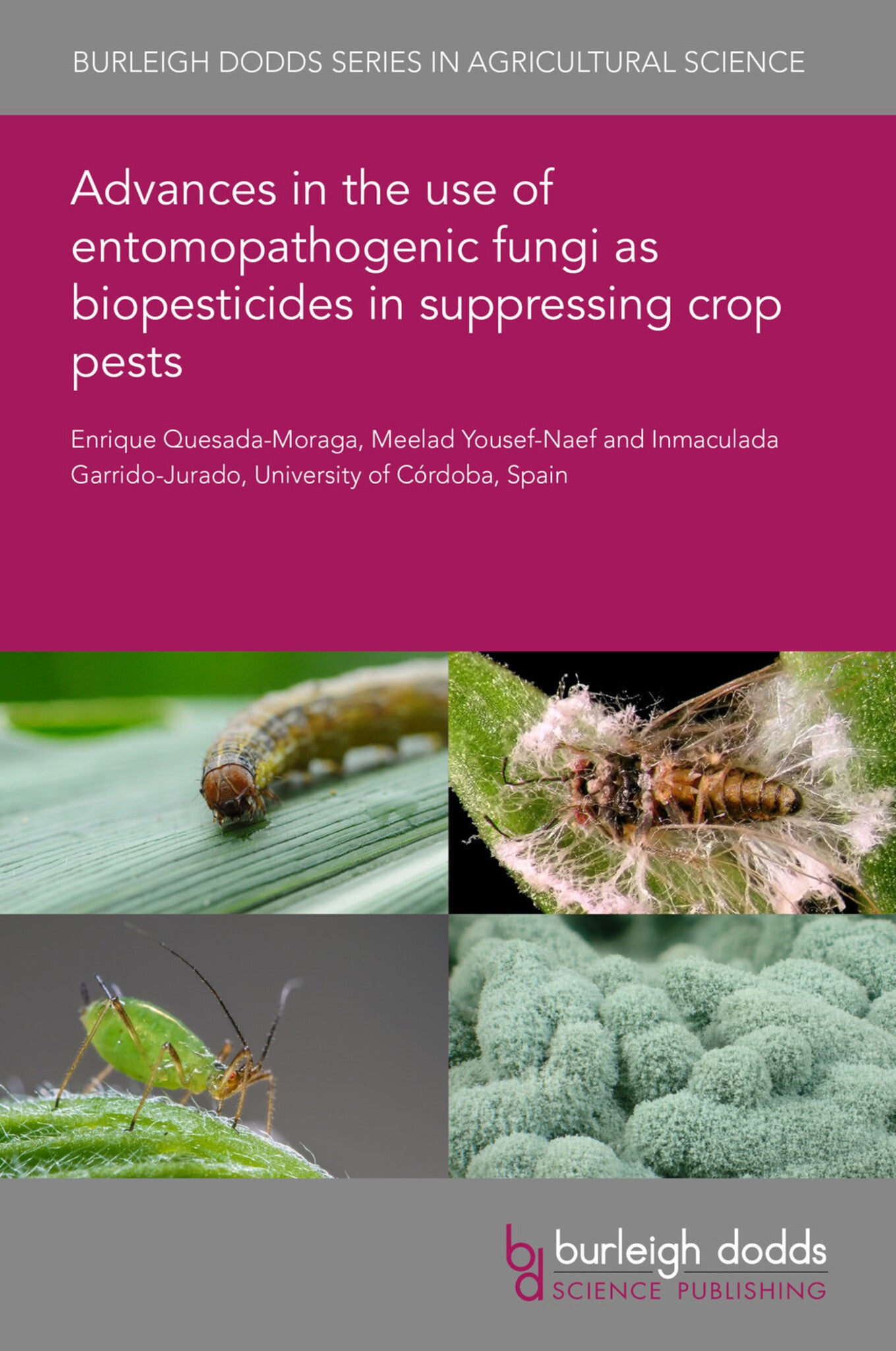We're sorry. An error has occurred
Please cancel or retry.
Advances in the use of entomopathogenic fungi as biopesticides in suppressing crop pests
Regular price
£25.00
Sale price
£25.00
Regular price
£25.00
Unit price
/
per
Sale
Sold out
Re-stocking soon
Hypocrealean ascomycetes have a set of properties such as their unique mode of action by direct penetration through the cuticle, relatively ease to mass production, and their newly discovered ecolo...
Read More

Some error occured while loading the Quick View. Please close the Quick View and try reloading the page.
Couldn't load pickup availability
- Format:
-
23 March 2020

Hypocrealean ascomycetes have a set of properties such as their unique mode of action by direct penetration through the cuticle, relatively ease to mass production, and their newly discovered ecological roles as endophytes and/or plant growth promoters which put them at the forefront of the global development of alternative control strategies. Firstly, the chapter addresses general aspects related to the natural occurrence and biodiversity, life cycle and delivery methods of the entomopathogenic fungi. Then using case studies, the chapter discusses the use of entomopathogenic fungi as biopesticides for the control of a wide range of insect and mite pests including locust and grasshoppers, soil dwelling insect pests, piercing and sucking insect and mite pests, store-grain pests, forestry pests, invasive pests, and medical and veterinary pests. Finally, the advantages and limitations of entomopathogenic fungi as biopesticides together with a market overview are provided, with a concluding section indicating also the possible future directions in the research on these fungi.

Price: £25.00
Publisher: Burleigh Dodds Science Publishing
Imprint: Burleigh Dodds Science Publishing
Series: Burleigh Dodds Series in Agricultural Science
Publication Date:
23 March 2020
ISBN: 9781786767004
Format: eBook
BISACs:
TECHNOLOGY & ENGINEERING / Pest Control, Pest control / plant diseases, TECHNOLOGY & ENGINEERING / Agriculture / Sustainable Agriculture, Sustainable agriculture, Agronomy and crop production

1 Introduction 2 Natural occurrence and biodiversity 3 Mode of action 4 Delivery methods 5 Use of entomopathogenic fungi as biopesticides 6 Advantages and limitations of entomopathogenic fungi as biopesticides 7 Market overview 8 Conclusion and future trends 9 Where to look for further information 10 References



